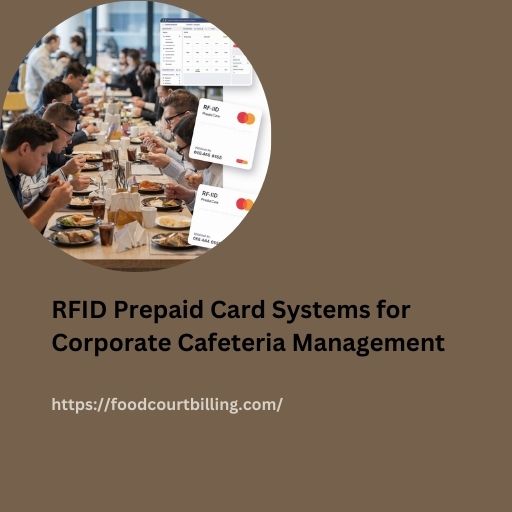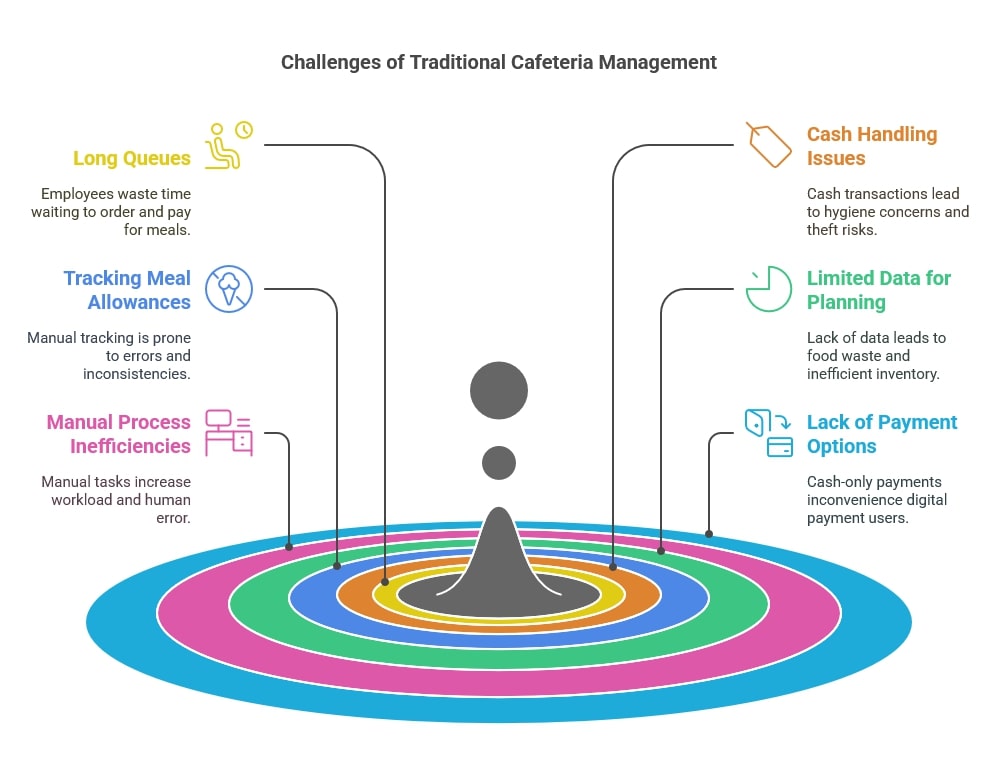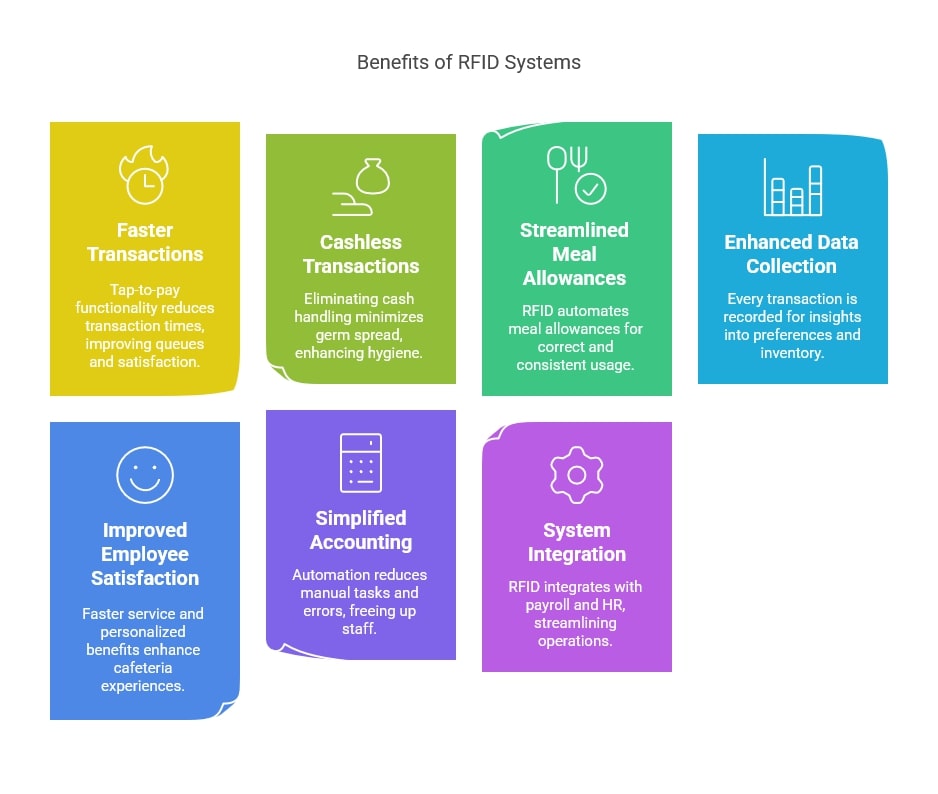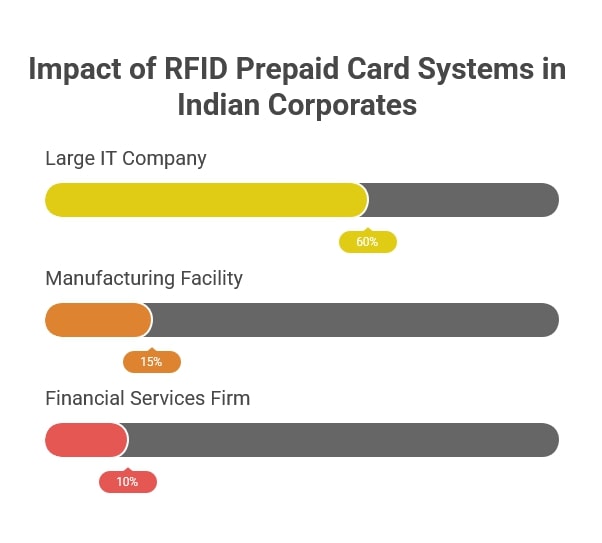Cafeteria Management Solutions: RFID Prepaid Cards | ATS
February 17, 2025 in Blog

Solve cafeteria challenges with RFID prepaid cards. Enhance efficiency, reduce costs, and improve employee experience.
For many companies in India, managing the corporate cafeteria is a daily challenge. Long queues, cash handling issues, and inefficient processes can lead to frustrated employees and increased operational costs. However, there’s a solution that can transform your cafeteria operations: RFID prepaid card systems.
In this blog post, we’ll explore the challenges of traditional cafeteria management, how RFID technology works, and the benefits it brings to both employees and employers. We’ll also provide a step-by-step guide to implementing an RFID prepaid card system and address common concerns.
The Challenges of Traditional Corporate Cafeteria Management in India
The traditional cafeteria management system, which often relies on cash transactions and manual processes, is riddled with inefficiencies. These issues not only frustrate employees but also increase operational costs and reduce productivity. Let’s break down the most common pain points:
- Long Queues and Wait Times
During peak hours, employees often face long queues, wasting valuable time waiting to order and pay for their meals. This is especially problematic for employees with limited lunch breaks. - Cash Handling Issues
Cash transactions introduce several problems: - Hygiene Concerns: Handling cash in a food service environment can spread germs and bacteria.
- Theft and Reconciliation: Cash handling increases the risk of theft and makes accounting more complex.
- Inconvenience: Employees may not always have exact change, leading to delays.
- Difficulty Tracking Meal Allowances and Subsidies
Managing meal allowances or subsidies manually using paper vouchers or spreadsheets is prone to errors and difficult to track consistently. - Limited Data for Menu Planning and Inventory Management
Traditional methods lack the ability to gather detailed data on meal preferences, popular items, and peak consumption times. This leads to food waste and inefficient inventory management. - Manual Processes Leading to Inefficiencies
Manual processes increase the workload for cafeteria staff and raise the likelihood of human error. - Lack of Payment Options
Limiting payment to cash can be inconvenient for employees who prefer digital payment methods.

RFID Prepaid Cards: A Modern Solution
RFID (Radio-Frequency Identification) prepaid cards offer a simple yet powerful solution to these challenges. These cards enable contactless, cashless transactions, streamlining cafeteria operations and improving employee satisfaction.
How RFID Prepaid Cards Work in a Corporate Cafeteria
- Card Issuance
Each employee receives an RFID prepaid card, which can be a dedicated cafeteria card or integrated into their existing employee ID card. - Top-Up Methods
Employees can add funds to their cards through: - Self-service kiosks (cash or card payments).
- Payroll integration for automatic deductions or additions.
- Tap-to-Pay Functionality
At the point of sale, employees simply tap their RFID card on a reader, and the transaction is processed instantly. - Types of Cards
- Dedicated Cafeteria Cards: Used solely for cafeteria payments.
- Integrated Employee ID Cards: Combine identification, access control, and payment functionality.
- Security Features
RFID systems include unique identifiers, transaction limits, and tamper-proof technology to prevent fraud and unauthorized use.
Benefits of RFID Prepaid Cards
Implementing an RFID prepaid card system offers numerous benefits for both companies and employees:
- Faster Transactions and Reduced Queues
Tap-to-pay functionality reduces transaction times by up to 70%, significantly shortening queues and improving employee satisfaction. - Cashless Transactions and Improved Hygiene
Eliminating cash handling minimizes the spread of germs, creating a healthier environment. - Streamlined Meal Allowances and Subsidies
RFID systems automate meal allowances, ensuring they are used correctly and consistently. - Enhanced Data Collection and Reporting
Every transaction is recorded, providing insights into meal preferences, peak hours, and inventory levels. This data enables data-driven decision-making for menu planning and inventory management. - Improved Employee Satisfaction
Faster service, convenient payment options, and personalized benefits enhance the overall cafeteria experience. - Simplified Accounting and Reconciliation
Automated processes reduce manual tasks, minimize errors, and free up staff for other responsibilities. - Integration with Existing Systems
RFID systems can integrate with payroll, HR, and accounting software, streamlining operations and eliminating data silos.

Implementing an RFID Prepaid Card System: A Step-by-Step Guide
- Needs Assessment
Analyze your cafeteria operations to identify specific requirements, such as the number of employees, peak hours, and budget. - Choosing a Provider
Select a provider with experience in RFID solutions, ensuring the system meets your needs and offers scalability, customization, and strong customer support. - System Setup and Installation
Install hardware (card readers, kiosks) and software, configure the system, and test it thoroughly before going live. - Card Issuance and Top-Up Methods
Issue cards to employees and communicate how to use and top them up. - Addressing Common Concerns
- Lost Cards: Implement a process for reporting, blocking, and replacing lost cards.
- Cost: While there’s an initial investment, the long-term benefits often outweigh the costs.
- System Downtime: Reputable providers offer backup systems and offline transaction capabilities.
Case Studies: Real-World Success in India
- Large IT Company in Bangalore
Reduced average queue times by 60% and saw a 15% reduction in food waste. - Manufacturing Facility in Chennai
Improved operational efficiency by 10% after integrating RFID with employee ID cards. - Financial Services Firm in Mumbai
Increased employee participation in the meal program due to the convenience of cashless payments.

Conclusion: Transform Your Cafeteria Today
RFID prepaid cards are a powerful solution for modernizing corporate cafeteria management. They address the inefficiencies of traditional systems, offering faster transactions, improved hygiene, and valuable data insights. By streamlining operations and enhancing the employee experience, RFID technology is transforming workplace dining.
Ready to revolutionize your corporate cafeteria? Contact Advance Technology Systems today to learn more about our RFID prepaid card solutions. Visit www.atsonline.in to explore our offerings and discover how we can help you create a more efficient and satisfying cafeteria experience for your employees.
Contact Us:
Phone: +91–9810078010
Email: ats.fnb@gmail.com
Let us help you take the first step toward a modern and efficient office canteen. Your employees will thank you!
FAQ: RFID Prepaid Card Systems for Corporate Cafeterias
- What are the main challenges of traditional corporate cafeteria management that RFID prepaid card systems aim to solve?
Traditional cafeteria management often suffers from long queues and wait times, hygiene concerns related to cash handling, the risk of theft and reconciliation issues with cash transactions, difficulty in tracking meal allowances and subsidies, limited data for menu planning and inventory management leading to food waste, inefficient manual processes, and a lack of payment options beyond cash, which can be inconvenient for employees.
- How do RFID prepaid cards work in a corporate cafeteria setting?
Each employee receives an RFID prepaid card, which can be a dedicated cafeteria card or integrated into their employee ID card. Employees can then add funds to these cards through self-service kiosks (using cash or cards) or via payroll integration for automatic deductions or additions. At the point of sale, employees simply tap their RFID card on a reader, and the transaction is processed instantly.
- What are the key benefits of implementing an RFID prepaid card system in a corporate cafeteria?
Key benefits include faster transactions and reduced queues, cashless transactions improving hygiene, streamlined management of meal allowances and subsidies, enhanced data collection and reporting for menu planning and inventory, improved employee satisfaction through convenience, simplified accounting and reconciliation, and the potential for integration with existing HR, payroll, and accounting systems.
- What steps are involved in implementing an RFID prepaid card system?
The implementation process involves conducting a needs assessment to understand specific requirements (number of employees, peak hours, budget), choosing a provider with experience in RFID solutions, system setup and installation (hardware and software), card issuance and communication of top-up methods to employees.
- How can the RFID prepaid card system improve meal planning and reduce food waste in the cafeteria?
The system collects data on meal preferences, popular items, and peak consumption times. This data enables data-driven decision-making for menu planning and inventory management, helping to reduce food waste by ensuring the cafeteria prepares the right quantities of the most popular dishes.
- What security features are typically included in RFID prepaid card systems to prevent fraud and unauthorized use?
RFID systems often include unique identifiers for each card, transaction limits to prevent large unauthorized purchases, and tamper-proof technology to deter fraud. Measures are also put in place to handle lost cards.
- What are some common concerns or objections companies might have about implementing RFID systems, and how can they be addressed?
Common concerns include the cost of initial investment, the management of lost cards, and the potential for system downtime. The costs can be offset by long-term benefits, procedures can be established for reporting, blocking, and replacing lost cards, and providers offer backup systems and offline transaction capabilities to mitigate downtime.
- How do RFID prepaid card systems integrate with other systems like payroll or HR?
RFID systems can be integrated with payroll systems to automatically deduct or add meal allowances to employee cards. Integration with HR systems can facilitate employee data management and card issuance, streamlining overall administrative processes and eliminating data silos.
Cashless Card Payment System for Food Court and Canteen
Upgrade your establishment with our Prepaid Card Software and take your business to the next level.
Conclusion
The cashless prepaid card payment system offers several advantages including increased speed and convenience, increased security, increased revenue, reduced costs, and increased customer loyalty and repeat business. With its easy implementation and integration with existing systems,
You can reach us by phone at +91 9810078010 or by email at ats.fnb@gmail.com. Thank you for your interest in our services. If you want to more information just visit https://www.foodcourtbilling.com